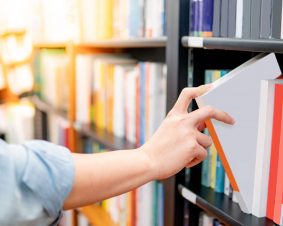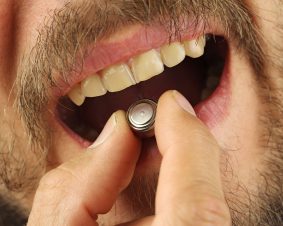 >
Spotlight October 2020: Nanosafety – Topic of the Future
>
Spotlight October 2020: Nanosafety – Topic of the Future
Research on nanosafety is a driver of innovation as the spotlight in July has demonstrated. But furthermore, this research field is built on routine as well if researchers look for the “needle in the haystack”. In many areas the safety research initiates the development of new methods, e.g. for the determination of nanoparticles within exposed organisms via the high-resolution analytical scanning transmission electron microscopy (HRSTEM) or helps with the establishment of reliable test guidelines. This and many more topics on body barriers or the immune system are combined in this cross cutting issue about “Future Nanosafety” by Krug and Krägeloh (2020).
This special issue on “Future Nanosafety” sketches organ specific effects of nanomaterials, demonstrates examples for new applications and offers new insights into biological mechanisms affected by nanomaterials. This collection of 17 scientific articles from important labs all over the world presents not only operation procedures for future test methods but includes also alternatives for animal testing or safe-by-design processes and introduces new detection methods for nanoparticles in the body or in consumer products.
Original Publication:
Harald Krug and Annette Kraegeloh (2020), Future Nanosafety. Chem. Res. Toxicol. 2020, 33, 5, 1037–1038. DOI: 10.1021/acs.chemrestox.0c00166

Weitere Spotlights
Spotlight December 2020: Rethinking Nanosafety – Part II
In December we would like to draw attention to the special issue: Rethinking Nanosafety – Part II in small. In the July Spotlight we already presented Part I. This special issue “Rethinking Nanosafety – Part II” also features research papers by renowned scientists in the field of nanosafety research. The first part of this special […]
Read moreSpotlight December 2022: Fighting tumors with micro robots
When we, the DaNa team as operators of the website nanopartikel.info, write about nanobots, i.e. nanometre-sized machines, we point out that these machines belong to science fiction, may even remain a utopia – i.e. never realisable. On the significantly larger micro-scale, however, small machines are conceivable that could help in the therapy of diseases, e.g. […]
Read moreSpotlight November 2021: Safe Materials from Scratch – Safe-by-Design in Materials Research
Advances in the field of materials science continue to amaze us with nanoscale materials with extraordinary chemical, electrical, optical, and numerous other properties. However, some nanoscale materials have different toxicological profiles compared to the same bulk material. Since safety issues are usually addressed just before launching a product into the market, safety issues may be […]
Read moreSpotlight May 2023: Dual energy – edible batteries
An Italian research group reports on edible batteries that supply electric current and can be digested as food, thus providing energy a second time. What sounds funny at first has a serious background, because in medicine, power sources are needed that could be transported through the digestive tract and possibly remain in the body unintentionally, […]
Read more

